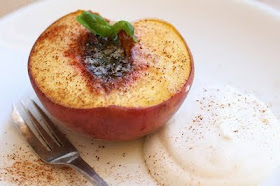This week is school holidays in Estonia, and my 10-year-old nephew stayed with us for a few days. We went for walks, swimming at the local swimming pool, did some homework together, he spent hours entertaining our little daughter. Of course, we also cooked and ate food together (nachos, enchiladas, quesadillas and other food with high kid appeal). Our last meal together was lunch on Wednesday and I offered to cook him something special. His request: makaroni-piimasupp or pasta and milk soup. I was baffled - I hadn't had that humble soup for almost two decades and I didn't think today's kids eat it. I was proven wrong :)
Furthermore, I had no intentions to blog about this particular milk soup and didn't focus too much on getting a good picture. But then somebody saw the picture in Flickr and asked for the recipe, so here you go after all...
Although the soup has some sugar in it, it's more of a "savoury" soup, served as a meal on its own, preferably with some ham sandwiches on the side.
Estonian Milk Soup with Pasta Shapes
(Makaroni-piimasupp)
Serves 4
500 ml water (2 cups)
1 tsp salt
100 g short pasta (1 cup)
750 ml full-fat milk (3 cups)
a generous pinch of sugar
1 Tbsp butter
Bring water to the vigorous boil, add salt and pasta shapes. Reduce heat to simmering, then boil for 5-7 minutes, until pasta is al dente.
Pour in the milk, give it all a stir and boil for another few minutes, until pasta is fully cooked.
Season with a pinch of sugar and some more salt, if you wish. Stir in the butter and serve.














